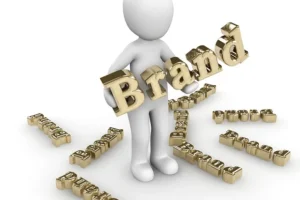
Customer behavior insights are important for every business. Is your company striving to uphold this promise, or have you made no such promise to your customers at all Impact Customer?
Have you ever wondered how customers feel when they are forced to wait in long lines? Apart from that, do you have any idea how this would affect your business?
Long lines are scary and make customers quit.
Furthermore, this results in customer dissatisfaction, a reduction in consumer capacity, a reduced customer retention rate, and more. So, as a business, you have to deal with all of this.
Of course, this is a major problem!!
Here, you must make sure that your potential customers do not abandon your services.
Customer flow is crucial to a company’s success. Therefore, failing to meet their needs or expectations can have a significant impact on their behavior towards your brand.
Also, first impressions matter. This means that a single negative encounter can permanently deter clients.
So, let us talk about a few ways in which long wait times impact user behavior and how it can hurt your business sales, conversions, and overall productivity.
Ways in Which Long Queues Affect Customer Behavior
Customers Disagree to Wait
The detailed customer wait times investigation reveals that individuals do not prefer to wait for long and leave the store. It is seen that customers can only wait for a maximum of 14 minutes to receive the services.
Furthermore, according to the surveys, businesses lost 75% of their clients due to high wait times. Of course, if a customer leaves a store with a sense of displeasure, they are unlikely to return.
Everyone nowadays demands immediate services or services with the shortest wait times. This means your business can achieve an increase in customer flow by utilizing the best way to reduce wait times.
However, remember that out-of-date technology or queue management systems cannot keep up with the fast-paced modern world. Also, there are several reasons that customers quit other than long wait times.
As a result, businesses must focus on all areas, including long wait lines, to determine how waiting times can be decreased.
- An unfair queuing system. This makes the customers annoyed when they find the other customers queuing up in line after them and getting served first.
- The in-store experience is unclear. This makes it difficult to locate the service or proper waiting rooms, pushing customers to leave.
- Customers sometimes do not find it difficult to wait, but boredom increases their dissatisfaction and stress.
The fact is simply that a business loses sales because of long wait times. As a result, it becomes significant to understand the mechanism of the mechanism of the virtual queue management system.
Anxiety and boredom
When consumers are bored in a waiting room or line, all they can think about is how long they’ve been waiting. Furthermore, their false assumptions about the brand or wait times worsen the situation.
According to studies, customers’ perceived wait times increase when they are bored.
The solution, of course, is to keep customers engaged and entertained. However, many businesses neglect customer boredom while disobeying their waiting in queues for long.
For those seeking ways to reduce wait times, failing to recognize the importance of keeping customers interested as they wait to be served can be a valuable lesson.
In fact, when clients are kept entertained, lines become enjoyable.
For example, firms can improve the customer experience by reducing perceived waiting times, as seen below.
- Incorporate digital signage. This means that HDTVs or other displays with engaging news or shows can be ideal for attracting customers.
- Adding items to store checkout points can entice customers to make last-minute purchases.
- Ask for feedback from customers. You can gather customer feedback and create reports via online surveys, social media platforms, and so on.
Jumping from One Line to Another
You might have heard of the term “jockeying.” This is referred to as when customers try to secure their spot in the store line.
However, such a problem only arises when a business uses the traditional approach of multiple queues. A strategy that fails to cut down on client wait times.
Have you ever analyzed why multiple lanes are inconvenient?
Multiple lanes in the business appear inefficient, and customers feel nervous when they observe multiple lines.
In the store, for example, there are five distinct lines. This indicates your odds of being in the correct line are only 5%.
Furthermore, the unease and discomfort cause customers to question whether they have arrived at the correct location.
Switching from one line to the next occurs here. And what it all leads to are hitches, confusion, and delayed service customer behavior insights.
Frustrated enough to quit
Of course, waiting is a pain!!
Stepping out of queues is one of the most inconvenient customer behaviors that businesses might encounter.
This is the situation where the customers have been waiting for a long time to make a purchase but give up due to frustration.
When waiting in a healthcare facility, clients can suffer even more physical harm.
As a result, their annoyance just adds to their dissatisfaction with the apparent wait times.
Overall, unpleasant feelings associated with waiting lines might be directly linked to customer purchasing experiences and customer behavior insights.
Wrapping Up
It’s crucial to make consumers’ waiting time valuable to figure out who will stay and who will quit.
Hence, if the waiting time is a concern for your company, it’s time to create a comprehensive strategy. This is just the beginning of how long wait times can affect customer behavior. To keep your business expanding while achieving excellent customer satisfaction, you’ll need to learn more.
Also, meeting client expectations will not immediately increase business sales, but it will bring loyal customers on board in the long term.
Integrating effective virtual queuing solutions, on the other hand, is not a choice. It will boost overall business productivity and keep consumers engaged, in addition to all your other goals for handling lines.
Furthermore, using a modern queuing solution instead of a traditional approach will reduce costs and boost profits.
Author Bio:
Allen Daniel is a content writer and blogger at Qwaiting, the leading queue management system. She holds a degree in literature from the National University of Singapore. Allen enjoys writing blogs related to technology, gadget reviews, marketing tips and tricks, and customer behavior insights.






